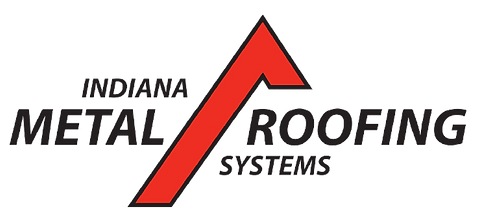Identifying Vulnerable Areas on Your Roof for Better Protection
- Joseph Justice
- Mar 17
- 3 min read
Your roof is constantly exposed to the elements, making certain areas more prone to damage than others. Identifying these vulnerable spots can help you prevent costly repairs and ensure your roof remains in top condition for years to come. If you're looking for professional roofing services in Fort Wayne, IN, Indiana Metal Roofing Systems offers expert solutions to protect your roof from potential damage.

Common Vulnerable Areas on a Roof
Several areas on a roof are more susceptible to wear and tear due to their exposure and structural design. These areas include:
Roof Valleys: Valleys are where two roof slopes meet, making them a high-traffic area for water runoff. If not properly sealed, water can penetrate, leading to leaks and water damage.
Flashing Around Chimneys and Vents: Flashing is used to seal and protect areas where the roof meets vertical structures like chimneys and vents. Over time, flashing can deteriorate, leading to gaps where water can seep in.
Eaves and Overhangs: These areas are particularly vulnerable to wind-driven rain and ice dams during winter. Ensuring proper insulation and ventilation can help prevent these issues.
Skylights: While skylights add natural light and appeal, they can also be a source of leaks if not properly sealed and maintained.
Importance of Regular Roof Inspections
Regular inspections are essential to detect and repair damage before it worsens. Professional roof inspections should focus on:
Flashing: Look for signs of rust or loose flashing, especially around chimneys, vents, and skylights.
Gutters: Ensure your gutters are clear of debris to prevent water from backing up onto the roof.
Scheduling routine inspections with a trusted company like Indiana Metal Roofing Systems can help extend the lifespan of your roof and protect your home from significant damage.
Fact Highlight: Did you know that roof valleys are the most common areas for leaks, accounting for up to 40% of roof-related water damage? Ensuring proper sealing in roof valleys is critical for avoiding long-term damage.
Roof Ventilation: A Critical Component
Ensuring adequate roof ventilation is essential for preserving your roof's overall condition and longevity. Without adequate ventilation, heat and moisture can build up in your attic, leading to:
Mold growth: Excess moisture can lead to mold and mildew in the attic and cause structural damage.
Shingle deterioration: Excessive heat can cause shingles to warp and crack prematurely.
Ice dams: In colder climates, poor ventilation can contribute to ice dams, which can cause water to back up under your shingles.
Ensuring your roof has proper ventilation will help maintain a stable temperature and reduce the risk of moisture-related problems. For those considering a new roof installation or upgrade, Indiana Metal Roofing Systems offers customized solutions that optimize ventilation for your specific home needs.
How to Protect Vulnerable Roof Areas
Taking preventative measures can save you from expensive repairs down the line. Here are some tips for protecting vulnerable areas on your roof:
Install Ice and Water Shields: These barriers are designed to prevent water from seeping into the roof, particularly in valleys and around flashing.
Reinforce Flashing: Regularly check and maintain flashing around chimneys, vents, and skylights. Consider upgrading to more durable flashing materials for long-term protection.
Trim Overhanging Branches: Trees close to your roof can cause damage by scraping shingles or dropping debris that clogs gutters.
Clean Gutters Regularly: Ensure gutters are free of debris to prevent water backup and roof damage.
FAQs
1. What are the most vulnerable areas of a roof?The most vulnerable areas include roof valleys, flashing around chimneys and vents, eaves, and skylights.
2. How can I protect my roof from water damage?Regular roof inspections, proper ventilation, and the installation of ice and water shields can help prevent water damage.
3. How often should I inspect my roof?It's recommended to inspect your roof at least once a year and after severe weather events to catch any potential issues early.
4. What causes leaks in roof valleys?Leaks in roof valleys are often caused by improper sealing or deterioration of the materials used to protect these areas.
5. How can I improve my roof's ventilation?Installing ridge vents, soffit vents, and attic fans can help improve airflow and prevent heat and moisture buildup in your roof.
Conclusion
Identifying and protecting vulnerable areas on your roof is essential for maintaining its longevity and preventing costly repairs. Regular inspections, proper ventilation, and high-quality materials from experts like Indiana Metal Roofing Systems can keep your roof in optimal condition for years to come.
Read more about: Key Tips for Roofing Work and Finding a Trusted Roofer


Comments